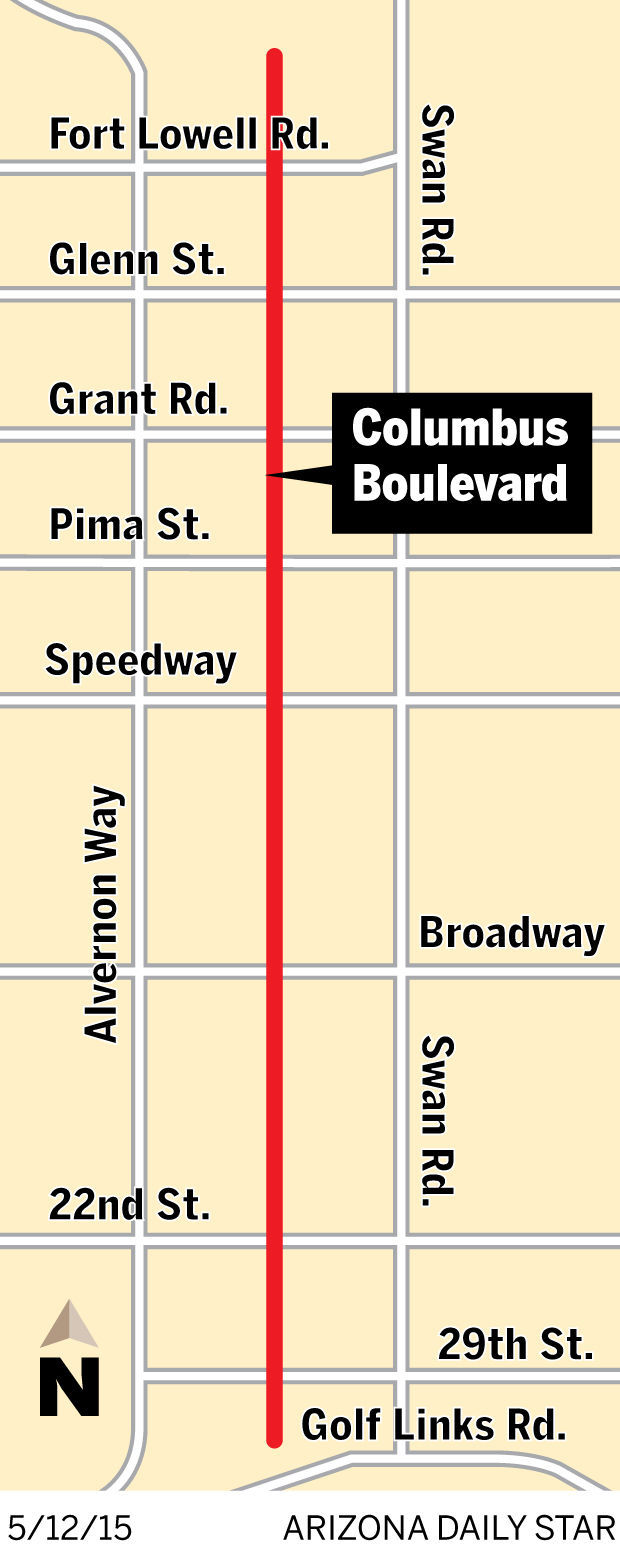You might assume a key midtown street was named for Christopher Columbus. Actually, Columbus Boulevard honors Columbus A. Glasmann (sometimes written as Glassman), a man of many trades in early Tucson.
Glasmann was born to William and Christiana (Kramer) Glasmann, both of Germany, on August 20, 1855, in Davenport, Iowa. His father was a merchant of some wealth, and his brother William Jr. went on to a colorful career raising buffalo on the shores of the Great Salt Lake. William also served as mayor of Ogden, Utah, and was editor of The Ogden Standard newspaper.
In December 1875, Columbus Glasmann left the Midwest on horseback, heading for South America. About six months later he rode into Tucson for a visit with his uncle, Heinrich “Henry” Glasmann, who persuaded him to stay.
 |
Henry Glasmann had come to Tucson as a private in the Union Army during the Civil War. He spent time in Tubac and became wealthy, but was forced out in 1870 by constant Apache attacks. The following year, he ran a butcher shop in the Doss Building in Tucson but by late 1873 he was living in Florence. In 1876, he revived the mostly or fully deserted Tubac by opening a hotel there.
Many years later, Columbus Glasmann described what Tucson was like when he arrived: “The main part of the town was on two blocks on Main Street — one north and the other south of Congress (Street) ... Ox teams and mule teams creaked along the streets … There were no banks, for everybody kept his money in his pocket.”
Around 1883, Glasmann was hired by Alex Levin as manager of the Park Brewery at Levins Park. On Jan. 12, 1884, the Arizona Weekly Citizen announced that Glasmann and Louis Enricht had purchased Snyder’s brewery from the mining town of Total Wreck and were shipping it to the boom town of Quijotoa, where they were putting up a brewery along with a dance and variety hall. On April 12 of that year, the paper announced that, “Glassman & Co.’s brewery began brewing last Saturday.”
It’s believed that Glasmann worked as a brewer or saloon keeper for many years and then got involved in ranching in Pinal County. By the beginning of the Mexican Revolution in 1910, he had extensive cattle interests on the border but lost much of his stock to repeated raids by bandits.
In July, 1911, when Glasmann heard about the murder of rancher John Bouschet, he offered a $1,000 reward on top of a $500 reward offered by the Pima County Board of Supervisors to assist in the capture of the killers. It’s unknown if the perpetrators were ever captured.
Glasmann became associated with the Pace Hay & Grain Co. in 1913 and worked there until at least 1914.
On April 25, 1914, the Arizona Daily Star announced that he had bought the Worley ranch on Sabino Canyon Road near the Rillito River. “He will build a road house and put in other entertainment and amusement features and will cater to motorists who make the trip to Sabino Canyon,” the paper said.
He was elected as an officer of the Arizona Pioneers Historical Society, now called the Arizona Historical Society, in 1916.
Around 1919, he formed a real estate partnership at 10 S. Main Street with James H. Mitman (namesake of the Mitman neighborhood at Speedway and North Craycroft roads). The pair purchased land on Speedway and, on Sept. 23, 1919, Mitman filed the Speedway Addition with Pima County and recorded Columbus Boulevard in honor of his partner.
Glasmann became manager of Jacobs Fuel and Feed Co. around 1926, and at the time still went to work in a horse and buggy. As he said in an interview that year, “In this way I never run out of gas, never have a puncture and never have to worry about blowouts.”
Around 1928, he married a woman named Carolina. In 1931, the couple moved to California. And on May 3, 1935, Glasmann died in San Diego.
Note: Thoreau Avenue (also called Thoreau Road) was named by John M. and Margaret C. Roberts in 1923, in honor of author and poet Henry David Thoreau. It was on the same alignment as Columbus Boulevard just north and south of Broadway.
The name appears inconsistently on city maps and apparently was abandoned in the 1950s, as Columbus Boulevard took over the whole alignment.





